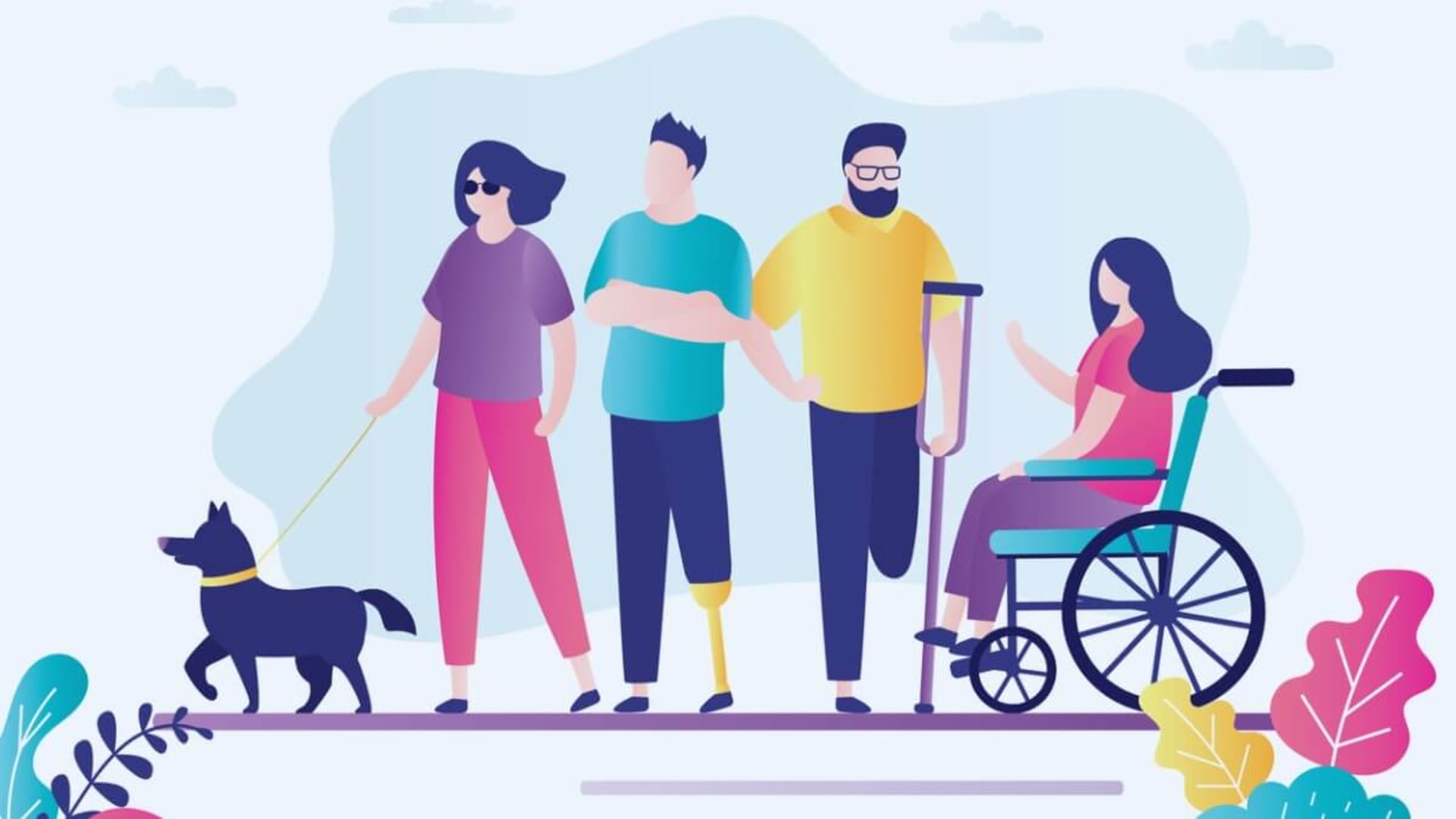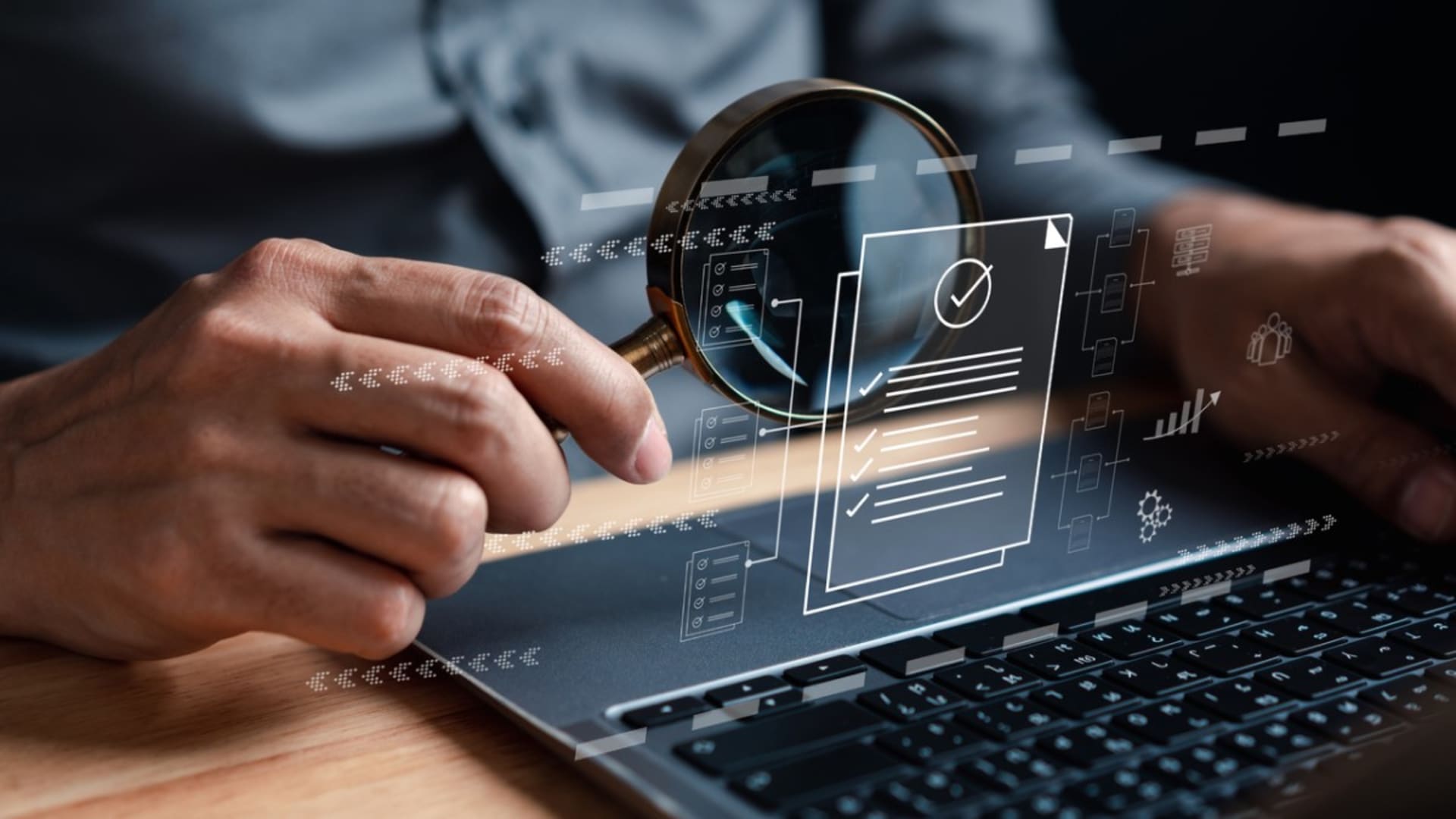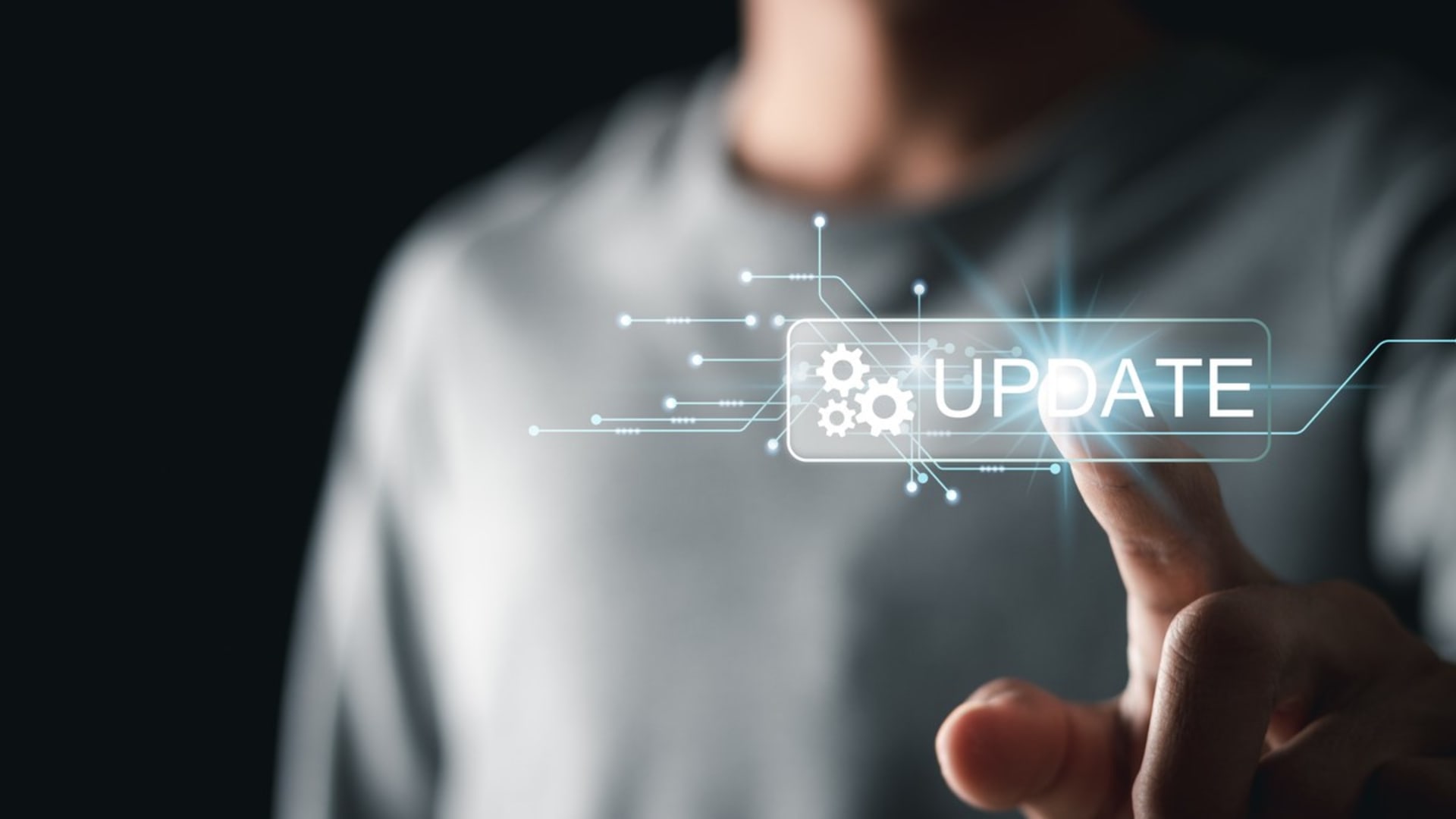Approximately one in five adults in the United States says that they have a disability, according to Pew Research. Despite this large percentage, their representation in terms of technology usage is relatively small — roughly 62% of adults with a disability say they own a desktop or laptop computer, compared with 81% of those without a disability. Meanwhile, 72% of the former category owns a smartphone, and 88% of the latter do.
For too long, many of the technologies that most of us rely on daily have been largely inaccessible to certain individuals and populations. But fortunately, we have been making strides toward making technology more inclusive to people with disabilities.
In fact, today, we have innovations that not only help members of these communities use the technologies many of us take for granted — we also have technological tools that help them with other aspects of their lives.
Here is a closer look at the innovations already changing the lives of people with disabilities.
What Is Assistive Technology?
Assistive technology is an umbrella term that describes a range of technologies that assist people in different ways. These tools are not limited to helping people with disabilities — they can also help older individuals or those with certain diseases. They don’t need to be high-tech either — even glasses are an example of an assistive aid!
These tools have been around for centuries, but more recently, we have created more sophisticated solutions that reach a wider range of people with different needs. Both hardware and software play a crucial role in helping people with disabilities cope with various challenges and eliminate barriers to accessing other tools.
Just some of the tasks assistive technology can help people perform — or perform better — include:
- Reading and writing
- Hearing and speaking
- Seeing
- Moving
- Remembering information
- Finding information
Meanwhile, they can address several disabilities and conditions, such as:
- Autism spectrum disorders
- Blindness and low vision
- Cognitive disorders/disabilities
- Communication disorders
- Deafness and hearing impairment
- Learning disabilities
- Mobility impairment
- Neurological disorders like ADD/ADHD
These lists are by no means exhaustive — assistive technology is evolving and growing as a concept to support more and more people with a wide range of abilities and conditions every day.
11 Assistive Software Technologies to Support People with Disabilities
Remember that assistive technology can be high-tech, such as computers equipped with special features and sensors customized to the individual’s particular needs, or low-tech, such as something as simple as a pencil grip. All types of assistive technology can be helpful. Here, however, we will focus on some of the newer, higher-tech software innovations designed to support people with disabilities in the digital age.
1. Text-to-Speech Software
For some, text-to-speech (TTS) technology is simply a cool invention, something that makes it easier to, say, listen to a magazine article on the go or hear a text message when they don’t have time to read it. But for those with blindness, visual impairments, and certain literacy or reading challenges, TTS is a critical tool for engaging with text and digesting information.
Text-to-speech involves converting text into synthesized speech. Essentially, it “reads aloud” digital text on a screen, allowing people to hear it. This improves and increases communication flows for people who cannot see the text for whatever reason.
This not only enables people who cannot read the text on a screen to understand it, but it also opens up an entire world of possibilities, assisting users with learning word pronunciations, dialects, messages, and content that may otherwise be incomprehensible to them. Moreover, it allows many different types of tools and applications to be used in new and different ways.
This technology was created decades ago, but it has become increasingly sophisticated over the years. Thanks to the help of innovations like deep learning, numerous tools are able to replicate dialogue that sounds natural and human-like.
TTS has numerous applications across spaces like e-learning, voice assistance technology, and the IoT. Of course, it’s also a game-changer for people with visual impairments, blindness, and certain learning disabilities.
2. The Braille Smartwatch
“Audio is impractical: Hearing is most important for visually impaired people. Earphones isolate them from the surrounding; loudspeakers eliminate privacy. For deaf-blind people, Braille is essential.”
Above is messaging on the DOT website. Touted as the first braille smartwatch, this wearable technology is specifically designed for the visually impaired and individuals with blindness. Not only does the smartwatch give the wearer the time, but also it opens up the door to plenty of other possibilities, making communication seamless and private and giving the user instant access to information that regular smartwatch or smartphone users have enjoyed without even thinking about it for so long.
DOT has all the bells and whistles of an ordinary smartwatch, such as alerts, reminders, message sending and receiving, notifications, and much more, along with additional features and tools like a braille dictionary. Following other tools for people with visual impairments, such as adaptive keyboards, this is yet another way to ensure that these individuals have technologies that make their lives that much easier.
3. Voice Assistants
We are all probably familiar with voice assistance tools like Amazon Echo, Google Home, and Siri. Technology makes the lives of people all over the world easier daily, aiding us with tasks like shopping, entertainment, weather forecasting, news updates, and much more.
While not strictly a tool for people with disabilities, voice assistance offers many uses and advantages to these individuals, who can accomplish a wide range of responsibilities and tasks by only using their vices. Thanks to technology, they can:
- Make purchases
- Make calls
- Set alarms
- Control lighting and temperature
- Access news updates
- Send text messages
All this can be accomplished without lifting a finger, helping people with mobility impairments and other conditions.
4. Augmentative and Alternative Communication Technologies
Augmentative and alternative communication (AAC) refers to assistive technologies that help people with developmental and speech disabilities, including those associated with autism, Down syndrome, cerebral palsy, apraxia, brain injury, stroke, ALS, and other conditions. The tools help these individuals communicate without using vocal speech.
AAC encompasses non-technological tools, such as manual signs, drawings, and finger spelling, but software and hardware can help augment the practices, allowing individuals to express their ideas, needs, and thoughts without speech.
One example is Proloquo4Text, an app for nonverbal individuals that “translates” typed words and phrases into speech. The single-screen layout allows for easy customization and interaction.
Another tool is Speak for Yourself. Speech-language pathologists developed the app to bridge the gap between communication abilities and the content the nonverbal individual wants to express.
Fluent AAC is an additional example of an app for people with difficulty using their natural voice. Users simply tap pictures of the action or item they want to vocalize. The app is customizable and accommodates the users’ language skills while adjusting as their vocabulary grows.
5. Video-conferencing Tools
Video-conferencing tools have become a primary way of communicating and collaborating in the workplace and beyond. And they have made remote work significantly easier.
Another benefit of these tools is that many major ones offer several different accessibility mechanisms to accommodate people with different abilities. For example, Zoom aims to “drive inclusivity for everyone” and facilitate the “most accessible communications experience.” These accessibility features include:
- Live transcriptions
- Recording highlights
- Auto-generated captions
- Manual captions and third-party captioning with the Closed Captioning REST API
- Multi-spotlight to spotlight a sign language interpreter, for example
- Multi-pinning and gallery rearrangement to highlight important messages and individuals
- Keyboard shortcuts
- Changes in display setting to customize the font size of chat and captions
- Screen reader support
- Focus mode to minimize distractions
6. Sound Amplification Apps
Noisy offices, rambling meetings, chaotic parties, TV shows, and loud restaurants are just some of the obstacles people who are hard of hearing have to grapple with regularly. It’s a challenge that can present several problems to these individuals — but fortunately, technology has offered some solutions.
Take the ExSilent HearYouNow app. Created by a manufacturer of hearing aids, the global app aims to address the needs of individuals coping with hearing loss who are not using or ready to use hearing aids. The app amplifies sounds and is highly adjustable to suit a range of hearing needs to help users better understand sounds. It also comes with a simple interface that is easy to use.
Additionally, the volume is adjustable per ear, and users can replay selections while controlling the volume for three different frequency bands.
7. Screen Readers
Screen readers have been around for several decades, but today’s models are far more sophisticated and customizable than the ones that were first introduced in the late 1980s. Now, the innovation helps individuals with visual impairments and other disabilities, such as dyslexia, read text on multiple platforms and types of screens. Some types of screen readers even offer braille displays for people with blindness and speech synthesizers for a range of purposes.
Screen readers may operate in different ways, such as via keyboard commands. Depending on the model’s sophistication, the screen reader may perform different functions, such as adjusting the color, text size, highlighting, and more features.
Screen readers now function across different operating systems and on different devices, such as Windows, Mac, iOS, Android, and more. Numerous types of screen readers are available on the market, offering various features and ways of customizing the functions and displays.
8. Wheelchair Accessibility Accommodations
People with mobility limitations face myriad challenges. Those who use wheelchairs, in particular, must cope with barriers like locations that are inaccessible and unable to accommodate their constraints. While many establishments — restaurants, movie theaters, grocery stores, schools, and others — have taken measures to become more accessible to people using wheelchairs, this is far from a widespread phenomenon.
That’s why WheelMate was created. With so much work to be done regarding accessibility in this regard, the app enables the user to scout out wheelchair-friendly locations ahead of time. WheelMate is available for Android and iOS users alike, providing an interactive app that maps out a range of physical establishments, along with accessible restrooms and parking spaces.
Currently, WheelMate maps out more than 35,000 locations across 45 different countries.
9. Screen Magnifiers
Screen magnifiers differ from screen readers, although some tools may encompass both functions. But screen-magnifying technology is designated software that specifically accommodates individuals with visual impairments but not blindness, allowing them to better view the screens on their devices.
The most basic types of screen magnifiers will simply increase the size of the text or images that appear on the screen — akin to a magnifying glass. But much more sophisticated software is available today that does this and much more, improving visibility for individuals who need these tools to see and digest the information.
For example, a more complex app might reduce glare, magnify the cursor, highlight various components, increase color and light contrast, shade various areas, smooth out text and images, and more.
One such tool is the Magnifier app. The Android app is free, easy to use, and customizable. Essentially, it “turns your phone into a digital magnifier,” preventing the user from having to carry a magnifier with them. Some devices and operating systems, such as Mac and Windows, have built-in screen magnifiers to accommodate the needs of visually impaired users.
10. Smart Canes
Mobility and visual impairments are not mutually exclusive — plenty of individuals cope with both. There is a tech solution for people who rely on canes for assistance and have visual impairments: the AI-powered smart cane.
No longer are canes simple sticks that help individuals with mobility issues get around. The smart cane is, simply put, intelligent.
Features vary from device to device, but the basic model has a built-in speech recognition tool that enables the user to deliver commands. Meanwhile, the tool is also equipped with smart sensors and other features that alert the user to obstructions and hazards, guiding them as they move. It also pairs with a smartphone app, enabling the user to find various locations, receive announcements and information, and get alerts, from directions to reminders about roadblocks.
There are different types of models and brands of smart canes, such as WeWALK and SmartCane
11. Driving/Fuel Assistance
For people with a range of disabilities, filling up the gas tank can be an enormous challenge. But as gas stations with attendants to fuel your vehicle for you become less and less ubiquitous, it is often difficult to find a full-service station. Too frequently, drivers with these challenges drive from station to station in search of help.
That’s why the FuelService app was created. The free app, available for both iOS and Android devices, was specifically designed to help disabled drivers find assistance with refueling their vehicles.
It’s an incredibly simple tool that shows the user which nearby gas stations have attendants who can assist them. Once you choose a station, the app will connect the driver with the station to ensure that help is available. It will also alert the attendant to the driver’s arrival and estimate the wait time. Plus, it has a rating system so users can evaluate the process and station for other drivers with disabilities.
The Next Frontier of Technologies to Support People with Disabilities
It is not enough to ensure that the technologies we build are accessible to people with a range of disabilities — although this is undoubtedly an important first step. But to create a more inclusive world, it is critical that we strive to do better, innovating to improve the lives of all the people within it.
These are just a few of the many ways technologies are helping people with disabilities. Already, we have plenty of innovations that assist and support people who need them the most. But now is not the time to stop creating. This space is not only necessary but also offers a lot of potential — potential we are still exploring.









